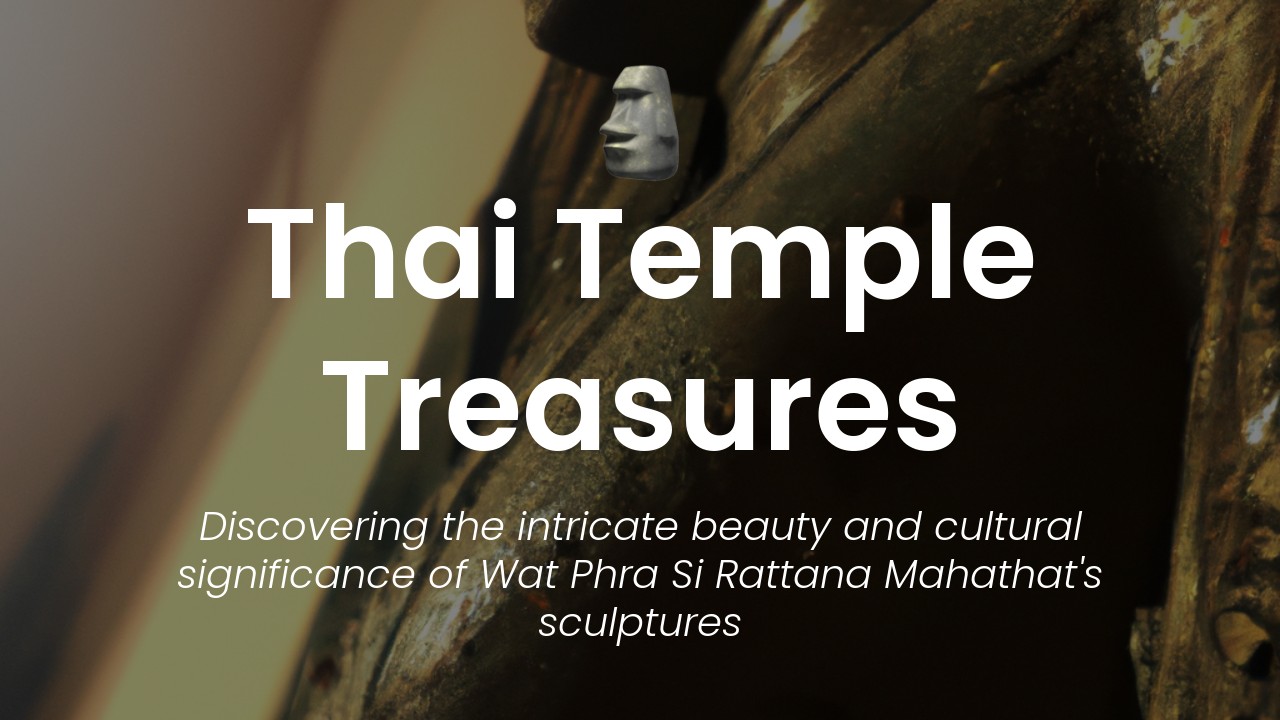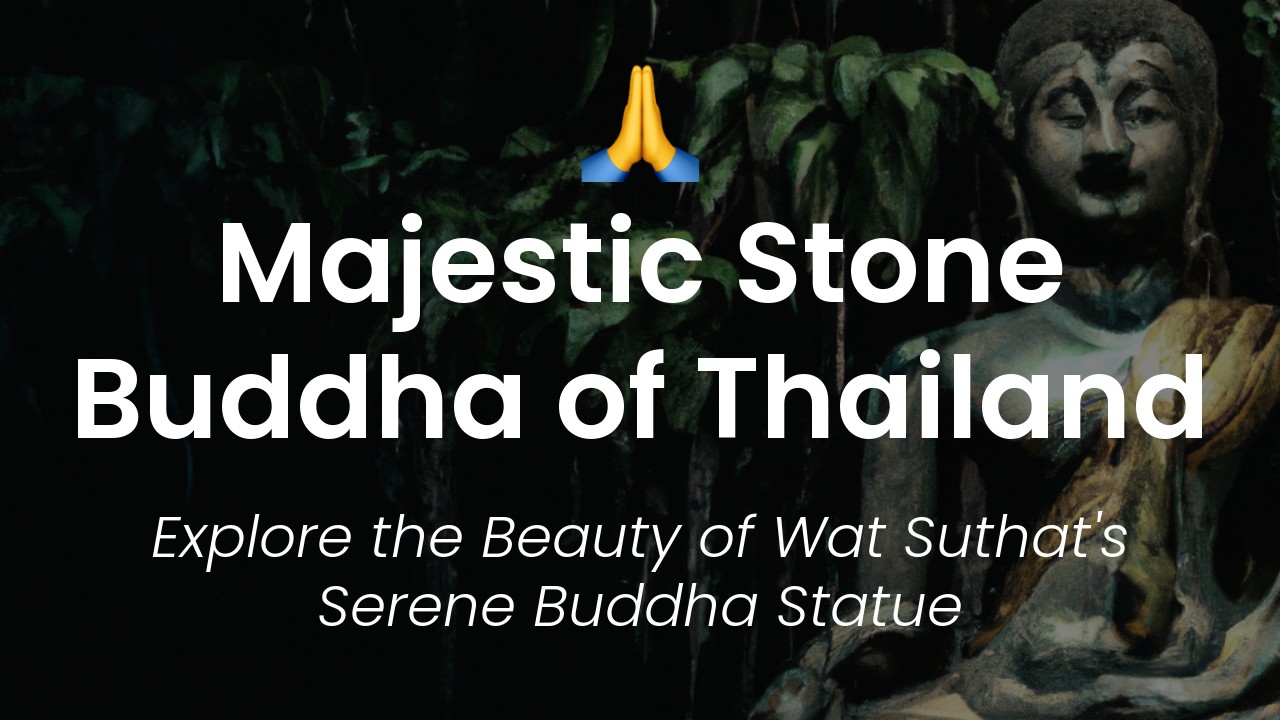As a Thai woman who loves sharing her country's rich cultural heritage, I am excited to introduce you to one of the most enchanting temples in Thailand – Wat Pho and its famed Reclining Buddha. This temple is located in the heart of Bangkok and is often overlooked by tourists who flock to the more well-known temples.
Wat Pho is an intriguing place, with its rich history dating back to the 16th century. It is believed that the temple was originally built during the reign of King Rama I to serve as a center for learning Buddhist teachings. The temple grew in size and influence under the succeeding kings as new structures were added. Today, Wat Pho is home to the largest collection of Buddha images in Thailand, including the stunning Reclining Buddha, which is a must-see for every visitor.
The highlight of Wat Pho is undoubtedly the Reclining Buddha, which measures 46 meters in length and 15 meters in height. The Buddha is beautifully adorned with gold leaf and its feet are intricately carved with 108 auspicious symbols. The atmosphere inside the temple is peaceful, as visitors are requested to remove their shoes before entering in order to respect the sacredness of the temple. The Reclining Buddha is truly awe-inspiring, and visitors are often spellbound by the sheer beauty of the statue.
Join me as I take you on a journey to discover the enchanting Wat Pho and its famed Reclining Buddha. In this article, I will share with you the highlights of my recent visit, along with some useful tips on how to make the most of your time at this fascinating temple.
History of Wat Pho temple
Wat Pho temple, also known as the Temple of the Reclining Buddha, is one of the oldest and largest temples in Bangkok, Thailand. The temple's history dates back to the Ayutthaya period, which was over 400 years ago. The temple was originally built in the 16th century by King Rama I, who was the first king of the Chakri Dynasty. It was initially built to serve as a center for education and knowledge, specifically in fields like medicine, science, and literature.
As time went by, Wat Pho temple became more than just a center for education. It also became a religious center, with its architecture reflecting various styles from different periods of Thai history. The temple houses over a thousand Buddha images, making it a popular attraction for both locals and tourists.
Reclining Buddha: size and details
One of the main attractions in Wat Pho temple is the Reclining Buddha statue, which is also known as Phra Buddha Saiyas. It is an impressive 46 meters long and 15 meters high, making it one of the largest Buddha statues in Thailand. The statue is made of brick and stucco and is covered in gold leaf.
The Buddha's feet are especially noteworthy, as they are decorated with mother-of-pearl inlay depicting the 108 lakshanas, or auspicious characteristics, of the Buddha. Visitors can also see the Buddha's face and even his hair, which is decorated in intricate patterns made of gold leaf and other materials.
Significance of Buddha's feet
The Buddha's feet are an important part of the Reclining Buddha statue and have deep significance in Buddhism. In Thai culture, feet are considered to be the lowest and dirtiest part of the body. Therefore, the fact that the Buddha's feet are adorned with precious materials is significant, as it shows that even the lowest part of his body is sacred and worthy of honor.
It is said that rubbing the Buddha's feet can bring good luck, as well as help to relieve common ailments like headaches and insomnia. Visitors can purchase a bowl of coins to drop into 108 bronze bowls that line the length of the Buddha’s feet, as a way of making merit.
Stunning temple architecture
Aside from the Reclining Buddha statue, Wat Pho temple is also renowned for its stunning architecture. The temple is known for its intricate details and artfully crafted structures, including ornate pagodas, beautiful chedis, and impressive statues of mythical creatures like dragons and giants.
One of the most striking features of the temple is the bright and colorful Chinese-style pavilion, which houses a magnificent bronze Buddha statue surrounded by intricate woodcarvings. The pavilion is adorned with brightly colored porcelain tiles, which contrast sharply with the dark wood of the building's structure.
Other notable Buddha statues
While the Reclining Buddha is undoubtedly the star attraction at Wat Pho temple, there are many other magnificent Buddha statues worth exploring. One such statue is the Golden Buddha, or Phra Buddha Maha Suwanna Patimakon, which is made of solid gold and weighs over five tons. The statue is housed in a beautiful, ornately decorated temple building.
Another notable Buddha statue is the smaller, yet still impressive, Standing Buddha statue, which is located in a separate building. This statue depicts the Buddha in a standing position, with his right hand raised in the gesture of fearlessness.
Tips for visiting Wat Pho
Wat Pho temple is a must-see destination for anyone visiting Bangkok. If you plan on visiting the temple, here are some tips to help you make the most of your trip:
- Wear clothing that covers your knees and shoulders, as the temple is considered a sacred place.
- Arrive early in the morning to avoid the crowds.
- Take off your shoes before entering any of the temple buildings.
- Be respectful of the Buddha statues and other sacred objects, and avoid turning your back to them or pointing your feet at them.
- Take your time exploring the temple grounds, as there is much to see and appreciate.
Conclusion: why it's a must-see site in Bangkok
Wat Pho temple is a mesmerizing destination that showcases Thailand's rich cultural heritage and artistic traditions. It is a place of immense spiritual significance, as well as the home of one of the largest and most impressive Buddha statues in the world.
Whether you're interested in history, architecture, or spirituality, Wat Pho temple has something to offer. So, if you're planning a trip to Bangkok, be sure to make Wat Pho temple one of your must-see destinations.







